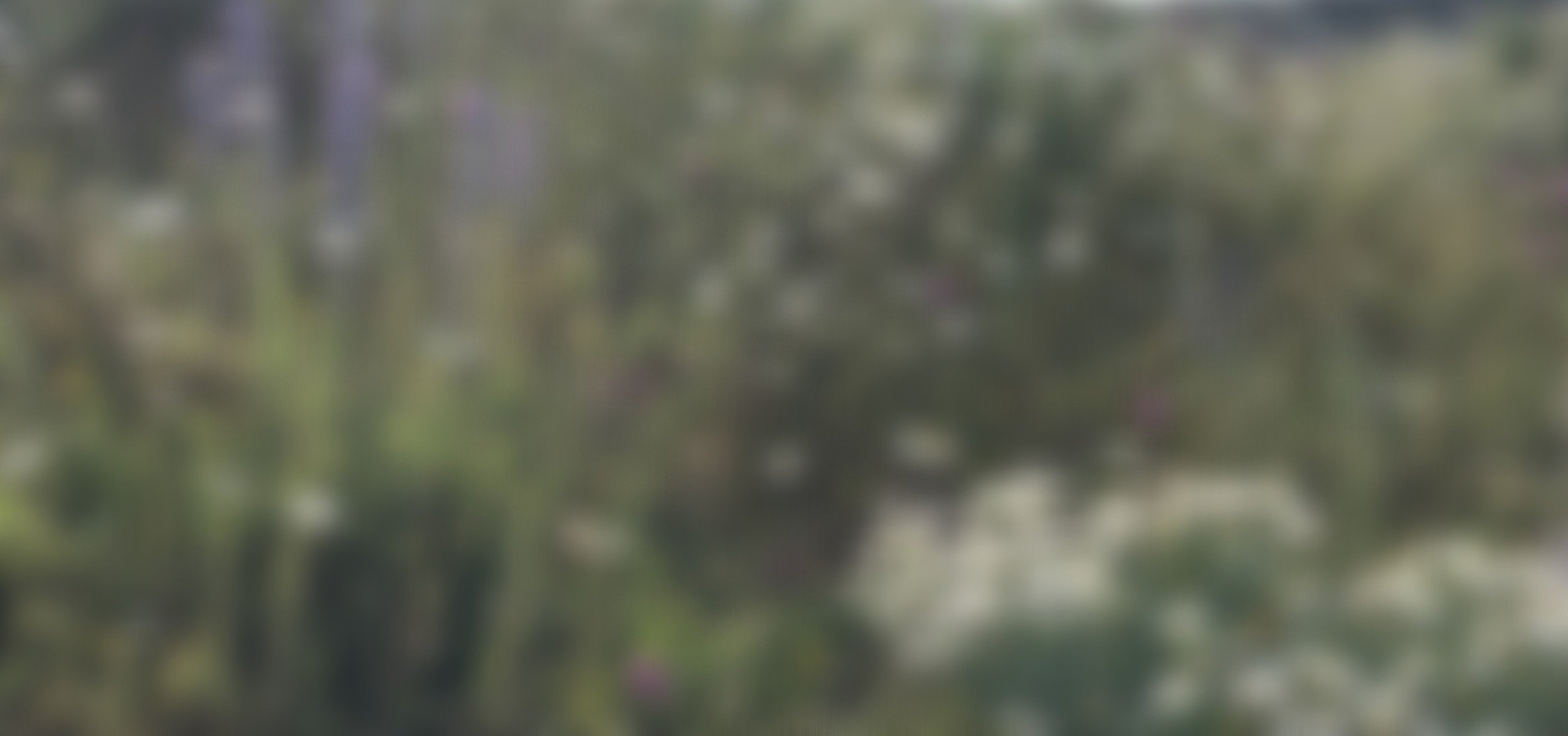Tate St Ives roof garden - a coastal meadow
Tate St Ives roof garden - a coastal meadow
Supporting wildlife and local biodiversity

Coastal wildflower gardening - Cornwall
On the north Cornish coastline, in St Ives, is the Tate gallery, which had its new extension completed in the Autumn of 2017. On the roof of which is a garden, but not a garden in the traditional sense. This is a public space that people are enticed to walk through, and sit, and relax amongst Cornish granite and wild flowers: A green space designed to emulate and blend in to the surrounding coastal landscape. The building itself is clad in turquoise blue tiles as described by the architect Jamie Fobert;
“In reference to the history of ceramicists in St Ives, such as Bernard Leach, the building is clad in shiplapped ceramic tiles, handmade by Froyle Tiles. Their clay is pale sandy yellow, with blue and green glazes that capture the ever-changing Cornish weather and blend into the hues of the sea beyond.”
In 2017, working with the landscape architect Andrew Rathbone, Juniper Gardens helped with the installation and planting of this designed, natural coastal habitat, and now Juniper Gardens is responsible for the maintenance and development of the garden.
Ecological gardening on a Cornish coastal rooftop
The garden is primarily a wildflower meadow: Sowed with a specialist seed mix containing native perennial species such as oxeye daisy (Leucanthemum vulgare), musk mallow (Malva moschata) and various grasses that provide a succession of flowering interest throughout the spring and summer. But it is also designed to be a coastal habitat and is interplanted with native coastal species such as sea thrift (Armeria maritima), sea campion (Silene vulgaris maritima) and sea kale (Crambe maritima). The large bluey-green leaves of sea kale links the garden with the blues and greens of the ceramic tiles on the building and the sea beyond.
The growing media is specially designed for a roof garden: It is light weight, free draining, and relatively nutrient poor. A key constituent in providing these functions is LECA (Light Expanded Clay Aggregate).

Designed coastal wildflower green space management
Wildflower meadows are normally cut two or three times per year to increase species diversity, mainly by reducing the competitive advantage of grasses. Cuttings are removed to keep nutrient levels in the soil low. On the Tate St Ives roof garden, the grass’s competitive advantage is also reduced by being in a dry, exposed, coastal location, so cutting is dependent on weather conditions - specifically the amount of rainfall. As far as possible the garden will be left to evolve to allow species diversity to develop in tune with our changing climate. A community of adapted species, that are naturally selected by local climatic conditions, such as hot dry summers, will form a more resilient and sustainable green space. However, whereas on the clifftops the sea thrift maybe able to get its roots down into the cracks and crevises of the rocks, the roof top garden has a completely different sub-terranean environment, so careful monitoring is required throughout hot dry periods especially.
Biodiversity and layering
Species diversity in wildflower meadows is evident not only through the successional growth and flowering of different species throughout different months of the year, but also through layering: Each species occupies a different height layer or niche within the vertical structure, similar to that which you would find in a rainforest, albeit on a much smaller scale. The individual species can then take advantage of the particular niche they are adapted for. For example, the groundcover plants may require slightly more shade. When you look closely much more is revealed. In this photo we have oxeye daisy (Leucanthemum vulgare) occupying the canopy layer and sea campion (Silene vulgaris maritima), red clover (Trifolium pratense) and the succulent sedum rosea (Rhodiola rosea) occupying the ground cover layer.

Other plants you may find on the roof garden
Achillea millefolium – yarrow
Armeria maritima - sea thrift
Aster tripolium - sea aster
Cochlearia officianallis - scurvy grass
Crambe maritma - sea kale
Daucus carota - wild carrot
Echium vulgare - viper’s bugloss
Leucanthemum vulgare -oxeye daisy
Lotus corniculatus - birdsfoot trefoil
Malva moschata - musk mallow
Rhodiola rosea - golden root
Rosa pimpinellifolia - burnet rose
Scilla verna - spring squill
Silene vulgaris maritima - sea campion
Trifolium pratense - wild red clover







